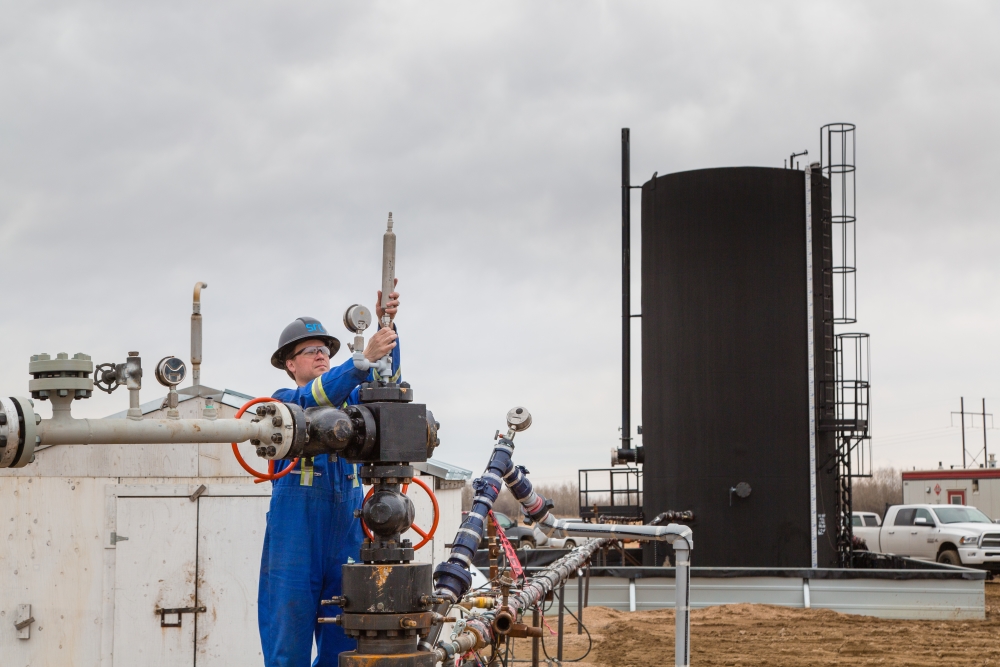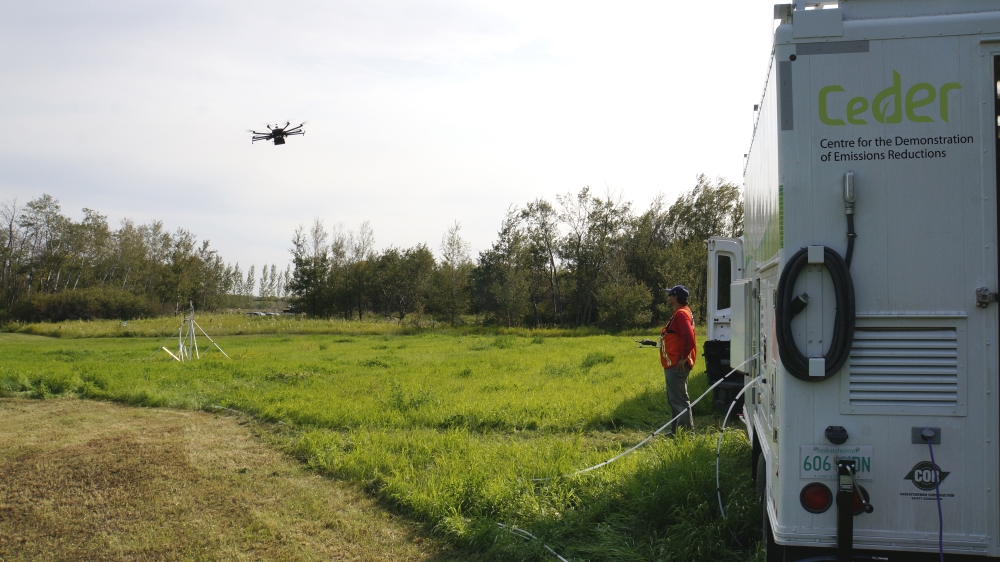
International concern over greenhouse gas (GHG) emissions has intensified since the United Nations’ Intergovernmental Panel on Climate Change (IPCC) released its special report in 2018. The report includes several scenarios describing the potential impact of global warming of 1.5 C above pre-industrial levels. To avoid some of the most severe impacts of climate change, the IPCC described key mitigation pathways that could potentially reduce GHG emissions globally.
In Canada, in addition to the carbon tax that was implemented in 2018, new regulations are about to be introduced to limit the amount of methane emissions in the upstream oil and gas sector. Companies must assess the amount of methane being released into the atmosphere and adopt methods to cut or eliminate these emissions.
Given both global and national pressure to decarbonize operations, Canadian industries will increasingly need to look for new technologies and implement more energy-efficient processes from proven, applicable mitigation options.
Carbon capture to play key role in GHG mitigation
To keep future global temperature increases below 1.5 degrees, both the IPCC and the International Energy Agency (IEA) have highlighted the importance of carbon capture, utilization and storage (CCUS). As the name suggests, these technologies capture carbon dioxide from industrial processes, which would otherwise be released into the atmosphere, and either store carbon dioxide underground, or use carbon to make new products.
Most of the large carbon storage operations in Canada have primarily focused on storage. Saskatchewan has one of the largest of these projects at the SaskPower Boundary Dam coal-fired power plant. In 2018, the CCUS facility captured over 625,000 tonnes of carbon.
Beyond CCUS: Carbon Dioxide Removal Technologies
The IPCC also stated that it’s no longer enough to mitigate carbon dioxide emissions—more emphasis needs to be placed on removing carbon that is already in the atmosphere.
In Canada, several new projects involving technology and process development aim to do just that. At a diamond mine in the Northwest Territories, researchers are assessing the ability of mine tailings to sequester carbon. Their research is looking at how to speed up this naturally occurring process.
In another example, a Vancouver-based company is developing a direct air capture technology that removes carbon dioxide from the atmosphere.
The IPCC report also included Biomass Energy with Carbon Capture and Storage (BECCS), which has gained prominence as a negative-emissions technology.
The premise is to use biomass feedstocks (e.g., trees and crops residues) to generate heat and electricity. Trees and crops extract carbon dioxide from the atmosphere, and when the biomass is combusted for energy production, the carbon dioxide that would have been released into the atmosphere is captured and stored underground.
Mark Johnston, a forestry expert at SRC, has been following the global developments of BECCS. He sees potential in the technology, but more analysis is needed. The main question is whether this technology can be developed at a large enough scale to really make a difference to GHG emissions globally.
Methane reduction in Canada – 2020 regulations
Canada has established regulations on methane emissions in the energy industry, some of which have been implemented in 2020. The goal is to reduce emissions by 45 per cent by 2025, below 2012 levels. The new regulations cover fugitive leaks and venting in the upstream oil and gas sector.
Cutting methane emissions is important as it’s much more effective at trapping heat than carbon dioxide. Each greenhouse gas’ ability to store heat is analyzed using the Global Warming Potential (GWP).
Carbon dioxide’s GWP is the reference and is set at 1. Methane’s GWP is estimated to be 28, meaning it is 28 times more effective in trapping heat than carbon dioxide over one hundred years. When compared over a 20-year period, methane is 70 times more potent than carbon dioxide.
As of January 1, 2020, oil and gas producers are also required to implement a leak detection and repair program (LDAR). Equipment inspections will need to be done three times a year, and if leaks are found, corrective action will be required.
These federal regulations are focused on “emission outcomes” meaning there are no prescribed ways of achieving the reduction goals. Companies can adopt new technologies and operational innovation to find solutions.
CeDER – mobile testing with applications beyond oil and gas
There are a lot of new developments happening in the world of emissions reduction technologies. How can companies ensure they are meeting regulations, while staying knowledgeable about all the available technologies that are applicable to their operations?
SRC created the Centre for the Demonstration of Emissions Reductions (CeDER) to facilitate testing, demonstration and technology validation in real-world situations for industry and technology developers.
This means technologies can be adopted by industry sooner because they’ve been demonstrated to work, moving industry quickly towards reducing emissions.
CeDER is a platform that provides real-world testing, demonstration and validation of emissions measurement, reduction, capture and conversion technologies. “These services can drive positive results in meeting both the objectives of the IPCC and federal regulations,” explains Erin Powell, who manages SRC’s Process Development team.
Erin manages a team of engineers and scientists that provide applied research and development, scale-up, demonstration and validation of value-added processing technologies for commercial application. This includes greenhouse gas (GHG) emission reductions technologies offered through CeDER.
“We offer assessments to help industries identify technologies,” Erin says, “that will lower their greenhouse gas emissions to meet regulatory requirements.”
Through regular monitoring of the oil and gas sector, Erin’s team has also developed a comprehensive database of nearly 400 current commercial and emerging GHG emissions reduction technologies to help identify what technologies are most applicable to a clients' specific operation. They then evaluate the technologies' performance against client requirements.
CeDER is also mobile. A recent post from Energy Central highlights the emergence—and advantages of—mobile emissions monitoring. Drones and trucks with sensors can offer “higher frequency and density coverage” than traditional instruments.
For example, SRC has tested the capabilities of drones for use in gas leak detection. Validating this technology may contribute to more efficient detection processes and automated inspections as part of routine maintenance.

For the Leak Detection and Repair (LDAR) regulations, trained technicians running SRC’s mobile trailers can locate fugitive emissions and provide appropriate solutions. SRC has been testing relevant technologies for leak detection, including optical gas imaging systems.
SRC’s CeDER services and analytical capabilities extend beyond the oil and gas sector too. SRC can provide similar assessments of GHG mitigation technologies and processes for mining and agriculture. Given its expertise in mine tailings, SRC sees opportunities for sequestering CO2 at mine sites, for example. Further, our GHG database compiles technologies across multiple sectors.
Industry, with the help of researchers, engineers and scientists, has already implemented many innovative technologies and processes to reduce environmental impacts. This next phase in the regulatory framework will require creativity and customization throughout the production process—no one operation is the same.
Collaboration, nationally and globally, will be key to finding solutions for this challenge and the next one to come.
References:
- https://www.ipcc.ch/site/assets/uploads/sites/2/2019/02/SR15_Chapter2_Low_Res.pdf
- https://www.carbonbrief.org/in-depth-qa-ipccs-special-report-on-climate-change-at-one-point-five-c
This post was written by former SRC employee, Dwayne Pattison.
